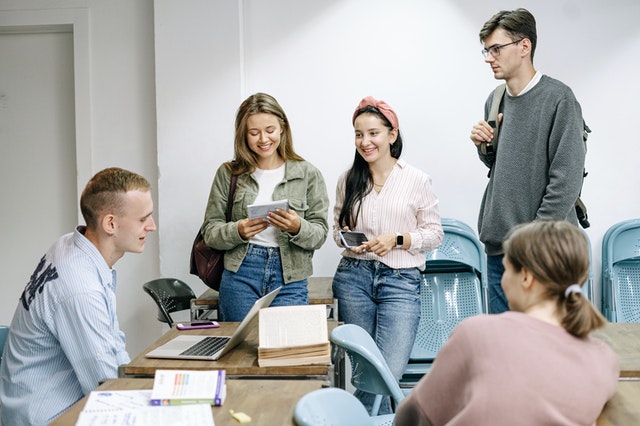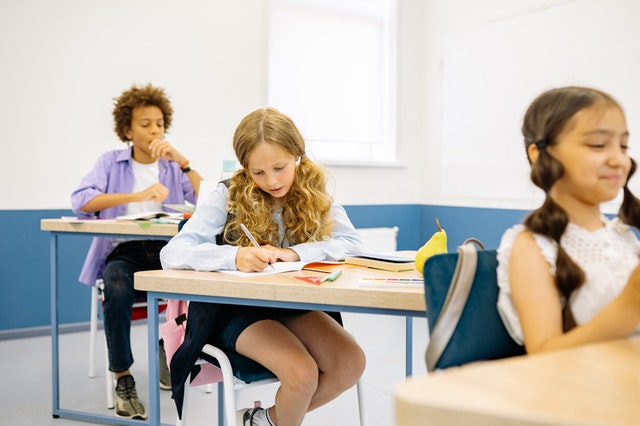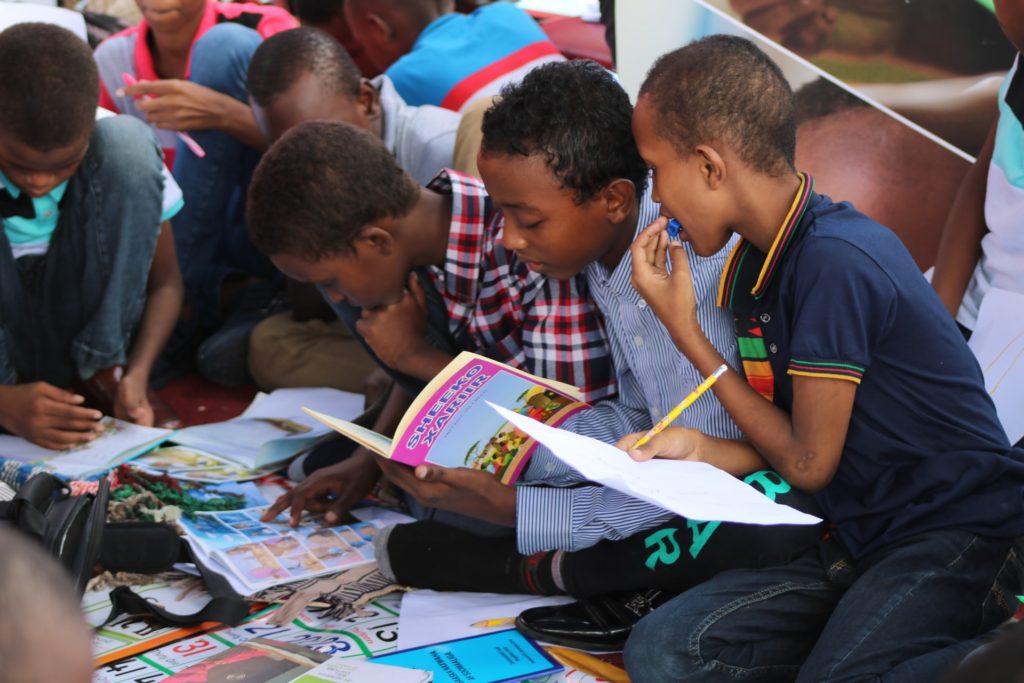Table of Contents
Creativity is an often misunderstood concept that some dismiss as only important for imagination in art and making fun fiction stories. However, creativity is actually an important function of the human brain that works to solve problems with novel solutions. These novel solutions seek to be more efficient or more effective than tried and true solutions and are the basis for progress in any field.
Teaching creativity in school is already defended by those in the arts and those who love literature, but this article will discuss recent research into narrative’s effect on creativity which shows how any subject area can utilize the problem solving power of creativity to help students think outside the box and become more independent at solving problems.
New Research on Teaching Creativity
Newly published research out of the Annals of the New York Academy of Sciences outlines a novel approach to teaching creativity through the use of three narrative techniques; World-building techniques, Perspective-shifting techniques and Action-generating techniques.
The authors of the study worked together with the U.S. Department of Defense, Fortune 50 companies, and graduate and professional schools in order to test out their new curriculum and show that creativity training is not just the purview of art. Teaching creativity in school could be beneficial for a wide variety of subjects and disciplines where people need to come up with untested solutions to difficult problems.
This new narrative approach was designed in order to address shortcomings in the currently mostly widely used method of teaching creative problem solving called “Divergent Thinking”. Divergent thinking is a far more logical approach which focuses on giving participants a set of data or a known situation and asking them to find new ways to organize, utilize, and present that data in more efficient or effective ways.
Divergent thinking focuses on using data and simply reorganizing known factors to improve efficiency. While this approach is good in that it is data driven, it falls prey to an issue called “Expert Bias”. Expert bias is the bias experts have for solutions that are backed by data. While it is important to make data driven decisions, sometimes this can stifle the creation of new methods and approaches which have yet to be tested.
According to the authors, “Expert bias is a major feature of traditional approaches to creativity training because those approaches rely on logic, which in turn relies on data, and so on past performance. Experts are thus likely to overvalue ideas that would succeed in known contexts and undervalue ones that exploit emergent opportunities.” (Fletcher, et al.)
While it is important to make decisions based on research, it is also important to understand that every approach was at one point untried and had no research to back it. Businesses, scientists, and students alike need to test out new theories in order to have new data to parse and consider in the creation of solutions to problems.
The new narrative based approach does give students some known factors, but then challenges the problem solver to use a “story” in order to imagine new possibilities as of yet untapped or discussed. For example, one of the ways the researchers prompted the development of creative thinking was to give students a known situation and then introduce a new environmental factor or new actor or character into the situation and ask students to imagine the new possible outcomes of the changes.
While the old methods of teaching creativity in school are good for improving problem solving with the tools at hand, this new method teaches students how to imagine and create entirely new problem solving techniques. So, rather than this approach being a replacement for the old teaching methods, it can work in tandem as a first step before utilizing the traditional divergent thinking method to fine tune approaches. These approaches to teaching creativity in school work synergistically to test out solutions, see additional problems, and develop new ways to approach particularly difficult issues.

Ways to Teach Creativity in School
Teaching creativity in school therefore is not just something that needs to be considered in art classes, but something that can improve the independence and efficiency of students in any subject area. Students regularly require a high amount of hand-holding when they encounter problems with classwork.
Teachers who use these methods will not only have students that are better at solving their own problems, but will be better equipped for the future to think outside the box and not rely on simply what has been handed to them to learn.
1: World-Building Techniques for Teaching Creativity in School
The first narrative technique identified in the study is called “world-building”. In this approach, students are tasked with a two step process. “(1) identify unique events and actors in their operational domain and then (2) conjecture what unprecedented threats or opportunities those events and actors might portend.” (Fletcher, et al.) In other words, teachers who want to teach creativity in school should start by having students imagine a scenario and then consider what problems they might encounter in that situation.
This approach is termed “world-building” because it requires students to put themselves into an alternate “world” or situation and think about what would be different about that situation compared to what they experience now. A math teacher might ask students to imagine that they are an employee at a flooring company and have them imagine the types of problems they might come across as they lay flooring down.
The traditional approach here would be to give students a very specific word problem which lays out exactly how much space they have to fill and ask them how many units of a specific tile or square of carpet they need to buy. While this might help students to use math to figure out how to use a specific operation in order to order the most efficient amount of tiles, this precludes any more creative solutions that might actually be more cost efficient and consider more variables.
For example, when students are given more flexibility with the word problem, they might consider things like spaces in the room that do not fit a square tile. While the traditional word problem would be fine with a remainder and assume that labor could be used to cut the tiles down to appropriate shapes, the student might realize that it is actually more cost effective to use triangular tiles for all or part of the room.
Perhaps the triangular tiles are more expensive, but the student might consider the labor costs involved in manually cutting tiles to fit and wonder if it might be more cost effective for the company to simply order pre-cut tiles from the manufacturer. This approach allows students, especially highly able students, to consider far more complex situations and deal with more variables, which can teach students not only more creativity, but more complex equations with more real world viability.
This world-building technique for teaching creativity in school is not just useful in math, but could also be used in other subjects as well. For example, in social studies, rather than teaching students about a situation, such as the causes of World War I, teachers who want students to be more creative could ask students to imagine if the leader of their country was assassinated by someone from a separatist movement.
They could either consider their own country or an imaginary country. Using an imaginary country is beneficial in that it increases creativity by reducing preconceived biases, but may lack important elements of realism. The teacher needs to consider their learning objectives and decide which approach would give students the perspective they need to not only boost their creativity, but also achieve the other learning objectives of the course.
Students could consider the sentiments that might lead to the assassination from both perspectives, the possible ways the country might react, and the consequences that might arise if escalation or compromise occur. This will help students to think more creatively about the situation in a less restrictive manner before looking at what actually happened in history.
Hindsight bias, much like expert bias, can often limit understanding of how things could have gone differently, simply because they did not actually happen that way in actuality. One of the important reasons to teach history is to prevent humanity from repeating the mistakes of the past. Because of this, it is important that students are able to creatively consider a world in which things happened differently and what the results might have been in such a case. This will help them more critically view the events of the past and connect them mindfully with current events.
2: Perspective-Shifting Techniques for Teaching Creativity in School

The second of the techniques for teaching creativity in school that was discussed in the study was the perspective-shifting technique. In this approach, students are given a situation and asked to consider how to solve an issue before then being asked how they would solve that same issue as another person with different resources or capabilities. For example, first, students might be asked to consider how the government might work to reduce plastic waste through policies before then being asked how a business might attempt to reduce that same plastic waste in their own context. Students could even be asked how they themselves could work to reduce plastic waste with how they themselves live.
Too often, people play the blame game and are far too capable of seeing how others could make a difference while doing nothing to make the change they want to see themselves. This creative approach can be beneficial in helping students see how each person, organization, or government has their role to play in solving important issues. Rather than being able to always nitpick the approaches of others, this strategy will make students focus more on how they can do more themselves rather than just bemoaning the state of the world while doing nothing to make the changes they hope to see.
This strategy can even be used to help students utilize creativity in their self reflections. While students often are experts at saying things the teacher should have done differently to help them, teachers can use this approach to help students see how they could do more themselves while also getting more thought out feedback for themselves. After doing a diagnostic test, setting goals, and completing their first exams, students will in many cases not have made the progress they optimistically set themselves at the beginning of the year.
After a unit, teachers can give students a feedback form with three questions or columns which ask them how they, their teacher, and their school can help them to do better next time. Teachers will get ideas on what students feel would be helpful for them during class whether that be teaching approaches from the teacher or learning tools that the school would provide and additionally be forced to consider what they could do with their own resources in order to do better on the next unit.
Perspective shifting is a common technique in literature classes, but it can also teach understanding and empathy for others. Whether that empathy be for the teacher who did all they could to help the student prepare for the exam or for a foreign country whose motivations they didn’t consider before, shifting perspectives helps students to think about how others think and imagine and understand how different people operate in different circumstances. While on the surface students may often double down on their original beliefs, these practices still can help them to be more mindful next time even if they couldn’t admit to their biases before.
3: Action-Generating Techniques for Teaching Creativity in School
The third and final technique discussed in the study was one called action-generating techniques which seek to challenge the status quo and help students consider multiple futures. According to the authors, action generating techniques are those that push creative thinking through “the introduction of a new actor into a known environment—or by the introduction of a known actor into a new environment.” (Fletcher, et al.) Basically, this technique is the “what if?” technique where students imagine what would happen if something in a situation changed and whether the most efficient solution to the problem changes or stays the same.
For example, students might first be asked to consider the best course of action for a successful business that is making a substantial profit. Students can come up with ideas based on the information given to them and defend their choices with their learning from class. Afterwards, the teacher could challenge the students to consider the best course of action if the business is in a significant amount of debt.
Whether considering the many possible outcomes of a science experiment, a war, or a budget, this strategy is all based on teachers “throwing a monkey wrench” into students’ thinking and requiring them to consider what they would do if their thinking was wrong. This helps students to be better prepared for more outcomes and already have plans for how they should react to a variety of outcomes.
This strategy for teaching creativity in school is great for getting students to consider multiple possibilities and not get bogged down in their preconceived notions. For example, if a student has a strong opinion that a certain result will occur, this approach can allow them to share their opinions on that outcome and why it is most likely while still requiring them to consider other possible outcomes and how their thinking would change if that were to be the result. Teachers can also use this approach as students self reflect and do goal setting. The teacher can allow students to set their own goals initially, but then have students consider what they will do depending on the results of their next test.
For example, the student might feel that they already have good study strategies and that they will be fine on the next test and don’t need to change any study strategies. The teacher can accept this if the result is that they get a high score, but challenge them to come up with what they will do if they were too overconfident in their abilities and end up scoring lower than expected.
No matter how unlikely the student may feel the outcomes might be, having them come up with what they plan to do with various outcomes can be great as a talking point when test results come out. The teacher can pull out what the student said and ask them if they plan to follow through with what they said they planned to do. This can help students be more open minded and less overconfident.
Conclusion
Not only will these techniques help students be more creative, but they will help students to think more open mindedly in a variety of situations. Creative thinking is great for problem solving, but also for humility as they consider various possible outcomes and realize their predictions are rarely perfect.
Students who learn using these techniques will be better prepared to consider any situation, realize that more than one outcome is always possible, and more mindfully consider how they can make a difference with their own actions instead of always shifting the blame for problems onto others.
Want more like this? Make Lab to Class a part of your weekly professional development schedule by subscribing to updates below.
References
Fletcher, Angus, and Mike Benveniste. “A New Method for Training Creativity: Narrative as an Alternative to Divergent Thinking.” Annals of the New York Academy of Sciences, 2022, https://doi.org/10.1111/nyas.14763.




Love this article. I will share with my colleagues and put into my 6th grade history project based learning curriculum!